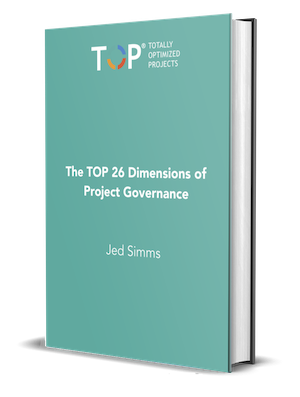Few organizations have taken the time to formally decide what their project governance functions and roles are. It is really simple.
The objective of a Governance process is to focus an organization’s investments and resource allocations on the areas of greatest benefit to the organization — and then ensure this value is fully realized. Rarely are these objectives defined and delivered.
The measures of success for a Project Governance program include:
- there is a mechanism for good ideas from anywhere in the organization to be explored and their value to the business to be objectively evaluated
- proposals submitted for approval have been fully thought through in terms of the business requirements, outcomes, benefits, risks, resources, plus the business and change impacts
- resources are not wasted on projects or initiatives that do not align with or contribute to the organization’s strategy or business imperatives
- the money put at risk on any project or initiative is commensurate with the project’s current (real) levels of risk and project knowledge, with multiple funding ‘gates’ existing for high risk projects
- approved projects are sponsored, directed, controlled, steered and supported by trained senior management to successfully deliver the business outcomes, benefits and value promised in the business case
- the capability of each project to deliver its expected outcomes and benefits is assessed periodically so that any necessary ‘course corrections’ can be made as early as possible
- the continuing viability and relevance of each project is monitored and the project suspended, changed or stopped if key factors change
- projects are measured on their delivery of the desired business outcomes, benefits and net value realized — i.e. their overall and cumulative impact on and value to the organization
- the lessons learned from each project are captured and used to improve project and benefit delivery across the organization.
Does your current governance program meet all of these success criteria?
These and other roles are outlined in "The 26 dimensions of project governance"




